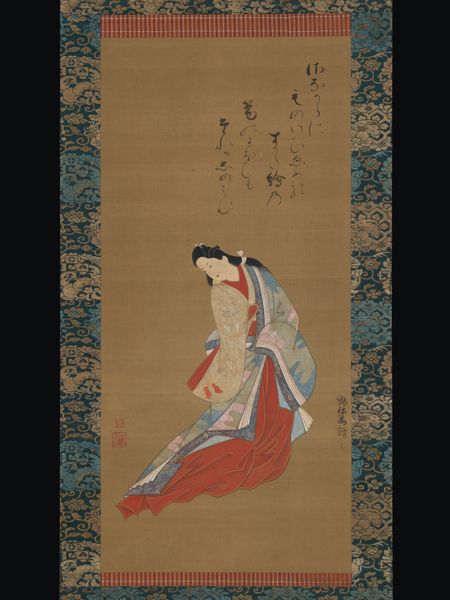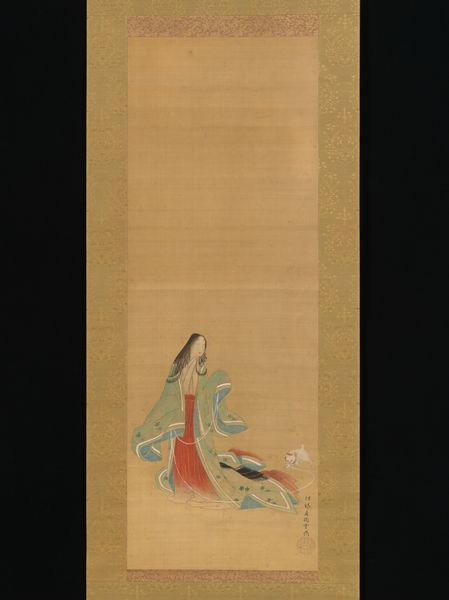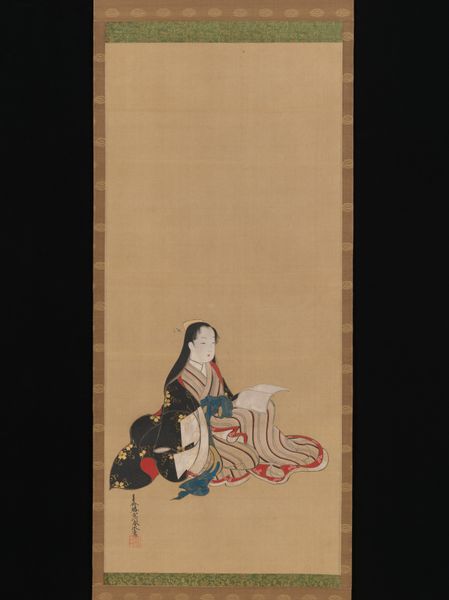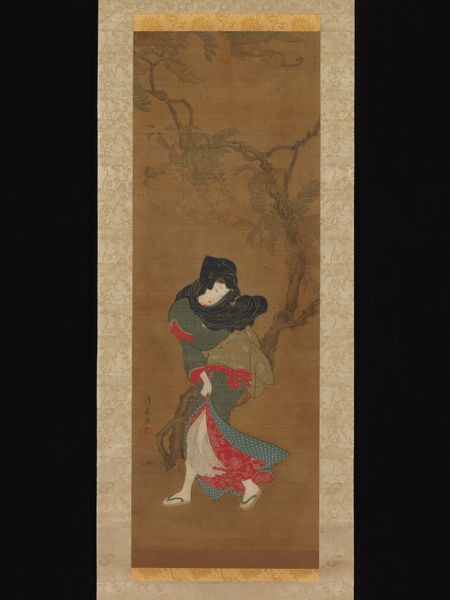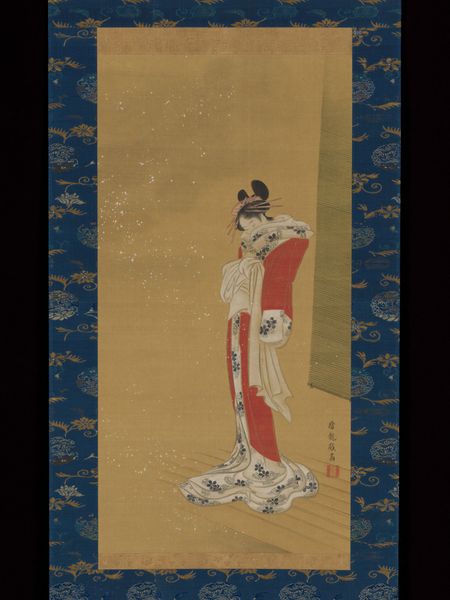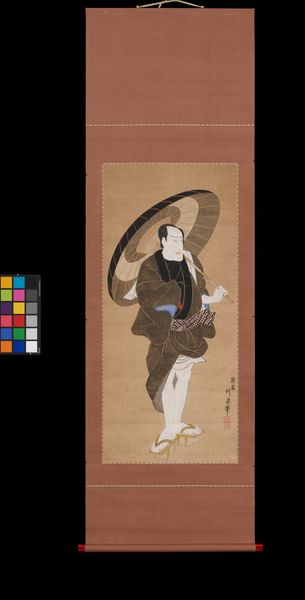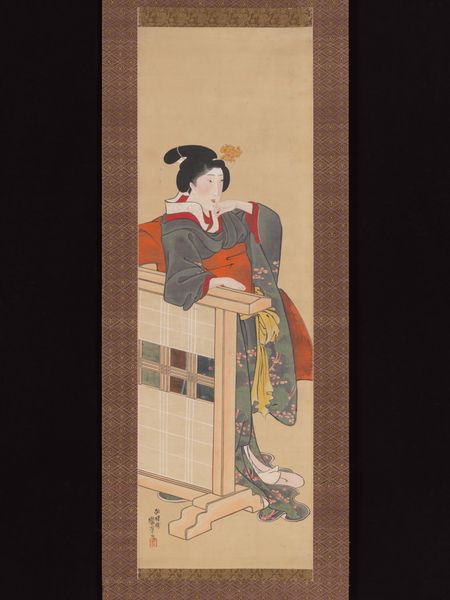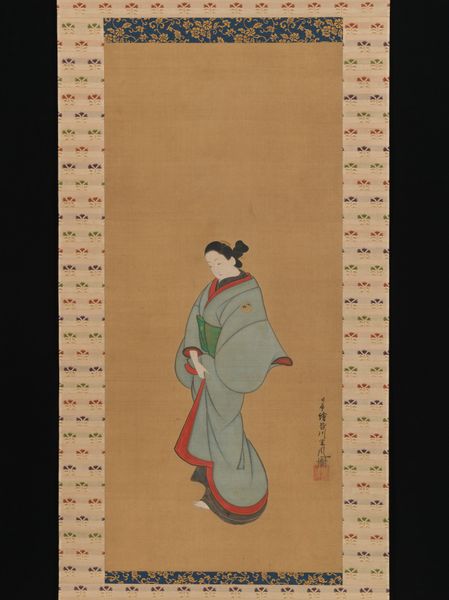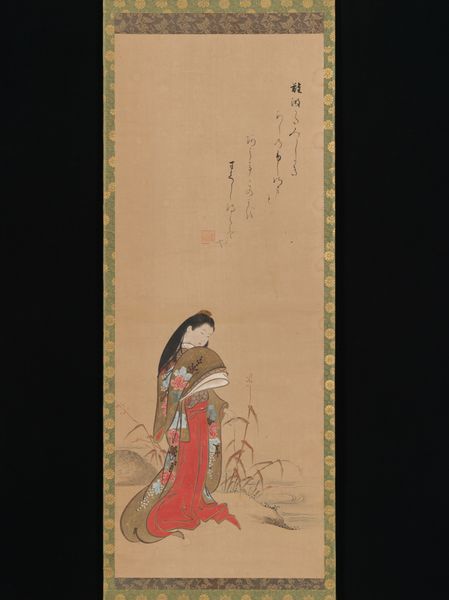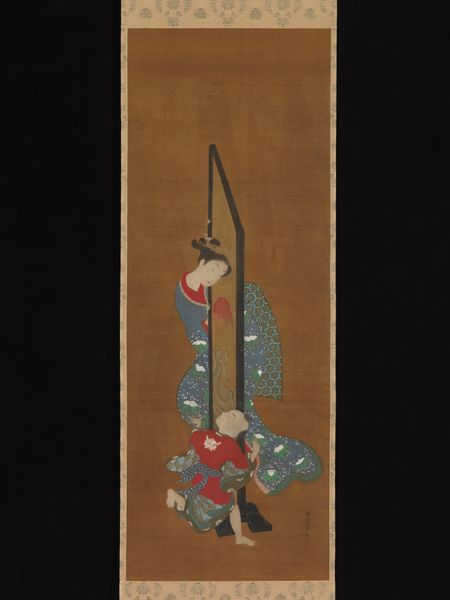
painting, watercolor
#
portrait
#
painting
#
asian-art
#
ukiyo-e
#
folk art
#
figuration
#
watercolor
#
folk-art
#
line
Dimensions: Image: 28 11/16 in. × 13 in. (72.8 × 33 cm) Overall with mounting: 60 13/16 × 14 3/4 in. (154.5 × 37.4 cm) Overall with knobs: 60 13/16 × 17 1/16 in. (154.5 × 43.3 cm)
Copyright: Public Domain
Curator: What strikes me immediately is the elegance of the pose, the soft colors, and the intimacy of the gesture. Editor: Let's delve into that a little, then. We're looking at "Standing Woman," a watercolor attributed to Ryūkadō, dating back to the 1740s. It is currently housed in the Metropolitan Museum of Art. Ryūkadō was deeply rooted in the Ukiyo-e tradition. Now, thinking about the context of this piece... Curator: The gesture, the pose… She's arranging her hair. It's such a simple act, but it's also a moment of quiet self-possession, even vulnerability. It invites the viewer into a private world. I love the slightly muted color palette too, which speaks volumes to the delicate nature of these paintings. Editor: Right. Ukiyo-e prints and paintings such as these emerged as a powerful reflection of the burgeoning urban culture in Japan during the Edo period. This was a society undergoing immense transformation, witnessing the ascent of a merchant class and a surge in demand for art that celebrated the ephemeral pleasures of daily life. Consider the labor involved in the making too. Curator: Thinking about that labor brings an interesting light onto that vulnerability. Ukiyo-e artists were part of a production line – did the woman arranging her hair also work within a certain process in the art world? What might she have thought? Editor: The artist worked within rigid societal and artistic expectations. However, these prints, often reproduced, offered affordable access to art for the masses. It also allowed people to explore their evolving identities and values in contrast to the older more ridgid class systems. It would not be uncommon that these people belonged to an emerging middle class that valued personal pleasures over strict societal duties. Curator: I find myself wondering if the modern viewers appreciate this history? Editor: In seeing and dissecting the complex artistic movements, materials and modes of artistic productions from other era's hopefully opens up dialogues. These dialogues encourage the consideration of artwork within wider socioeconomic landscapes. Curator: Hopefully also making connections between artistic labor through the eras and also across class and social divides.
Comments
No comments
Be the first to comment and join the conversation on the ultimate creative platform.
